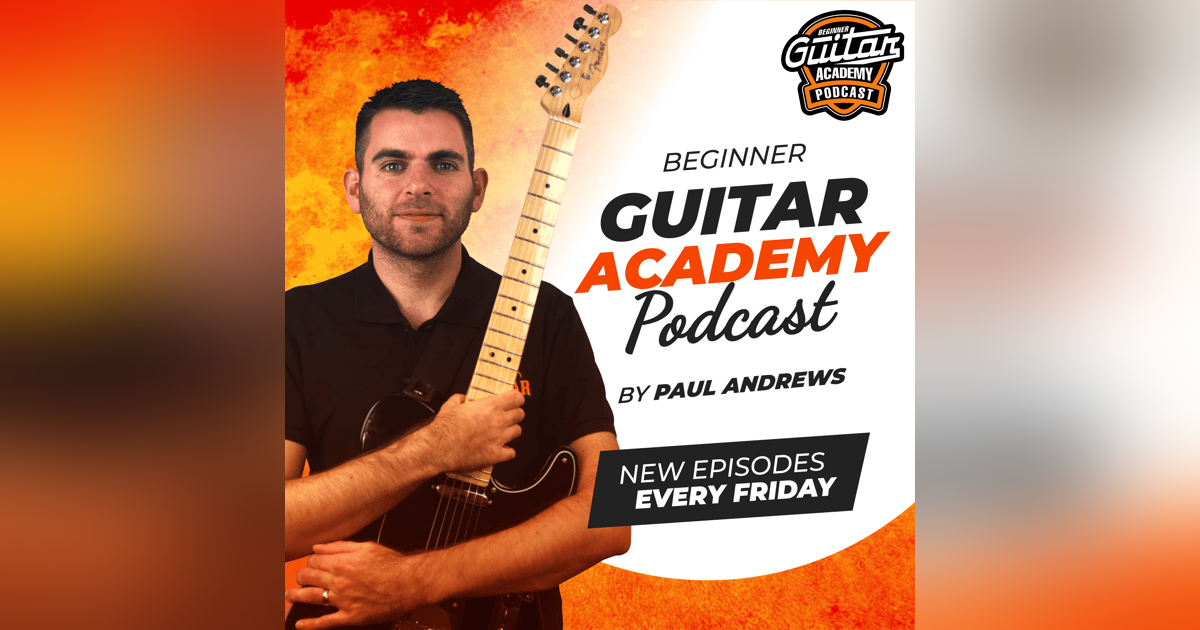238 - Mastering the G Chord: Shapes, Songs, Progressions, and Common Struggles
Episode Overview:
This week, Paul dives into one of the most fundamental and beloved guitar chords, the G chord! Whether you're picking up the guitar for the first time or looking to solidify your chord-changing skills, this episode covers everything you need to know about the G chord.
Paul breaks down the most common G chord shapes, offers song suggestions featuring the G chord, shares practice tips, explores chord progressions in the key of G, and tackles common struggles (with solutions!) players face with the G chord.
What You’ll Learn in this Episode:
1. Essential G Chord Shapes
Paul walks you through multiple ways to play the G chord, starting from the simplest forms to the more full-sounding variations:
- Open strings (D, G, B)
- One-finger G
- Two-finger G
- Standard three-finger G
- Full four-finger G (and why it’s a great option)
- G5 for that classic rock sound
TIP: Don’t forget to download the chord shape sheet here!
2. Songs Using the G Chord
Paul highlights several beginner-friendly songs that feature the G chord and are perfect for practicing changes:
- “Songbird” by Oasis
- “Love Me Do” by The Beatles (working on the tricky G-C change)
- “Knockin’ On Heaven’s Door” by Bob Dylan
- “Brown Eyed Girl” by Van Morrison
All these songs (and more) are available in the Academy’s song section!
3. Key of G – Chord Progressions and Creativity
Learn how the G chord fits within its key and which chords naturally pair with it:
- Chords in the key of G: G, A minor, B minor, C, D, E minor (with tips for a Bm7 shape if you’re not ready for barre chords)
- Using these chords for basic songwriting, jam sessions, or exploring new musical ideas
Paul gives practical advice on experimenting with these chords. Play around with progression ideas like G–D–Em–C or G–Em–C–D.
4. Popular Chord Progressions Featuring G
Paul breaks down some of the most common and useful progressions:
- G – D – Em – C (classic ballad feel)
- G – Em – C – D (pop standard; think “Stand By Me”)
- G – C – D (the “I-IV-V” progression, found in blues, rock, and more)
5. Troubleshooting: Common Struggles and Solutions
Paul provides practical solutions to help you:
- Overcome muted strings and challenging stretches
- Improve clean tone by adjusting thumb/wrist position
- Speed up chord changes with “pivot” fingers
- Practice smarter with repetition and technique, not just rote practice
Resources Mentioned:
- Chord Shape Sheet: Download the free PDF with G chord shapes at BGAPodcast.com/238
- Video Version: Prefer to watch? Check the video podcast in the show notes, on YouTube, or Facebook.
- Beginner Guitar Academy: Members can access song lessons and a special G chord challenge (learn 18 G chord shapes!) in the Academy's community section.
Final Thoughts:
Learning the G chord is a must for all beginner guitarists. It’s versatile, appears in countless songs, and is foundational for unlocking the full world of rhythm guitar. Take your time, be patient with your progress, and remember: repetition, good technique, and thoughtful practice are your best friends.













